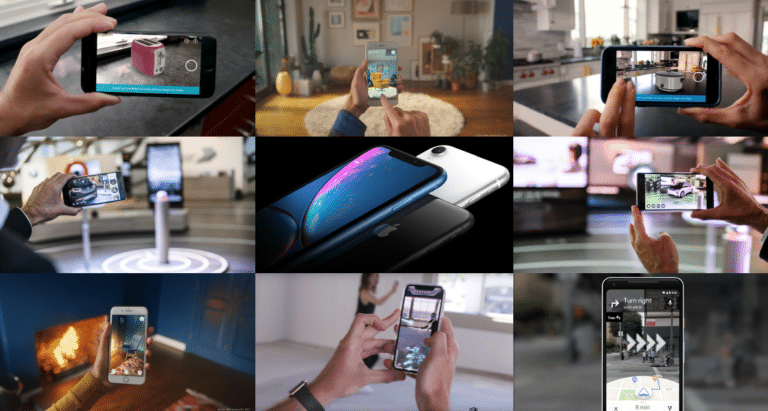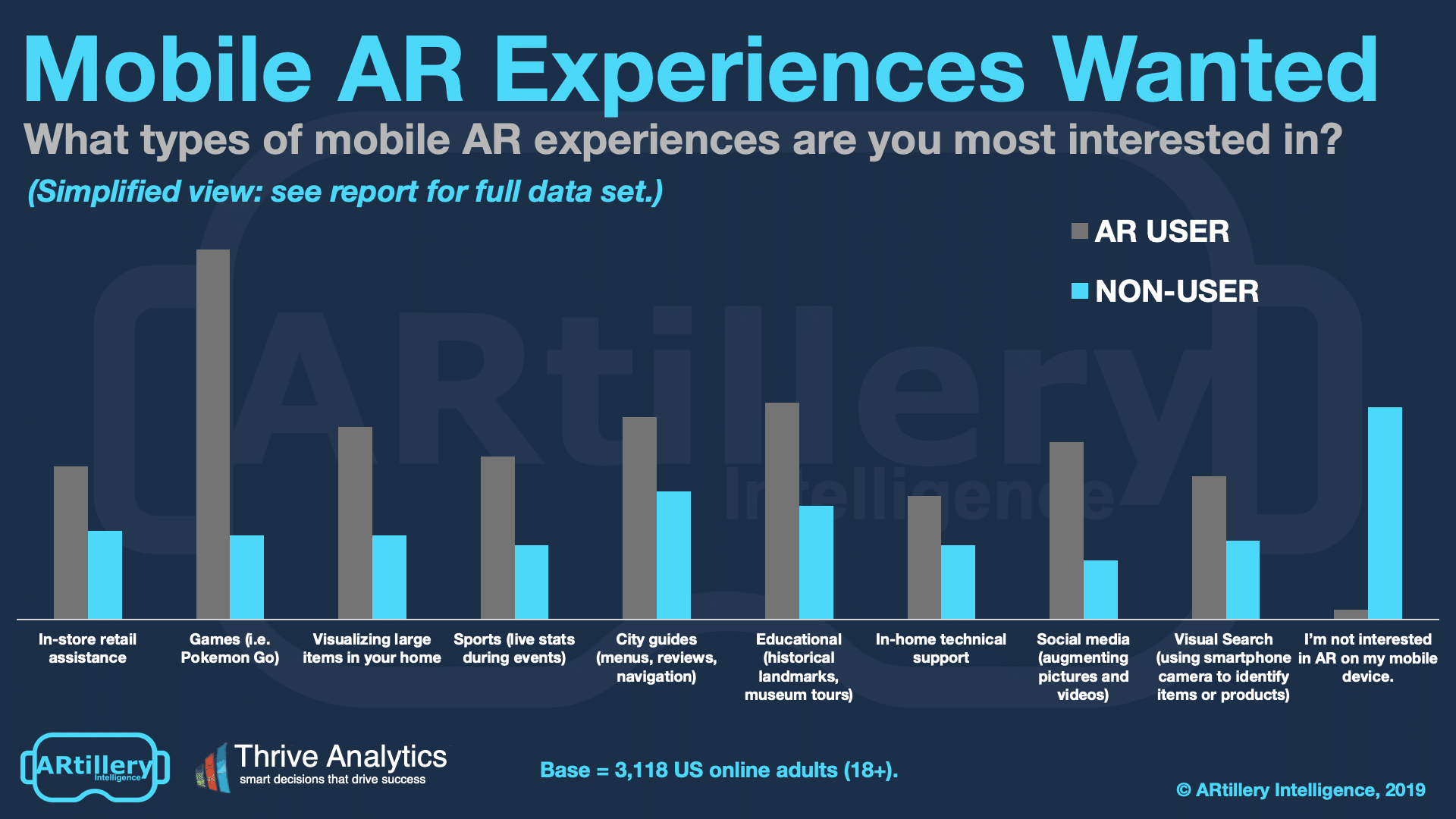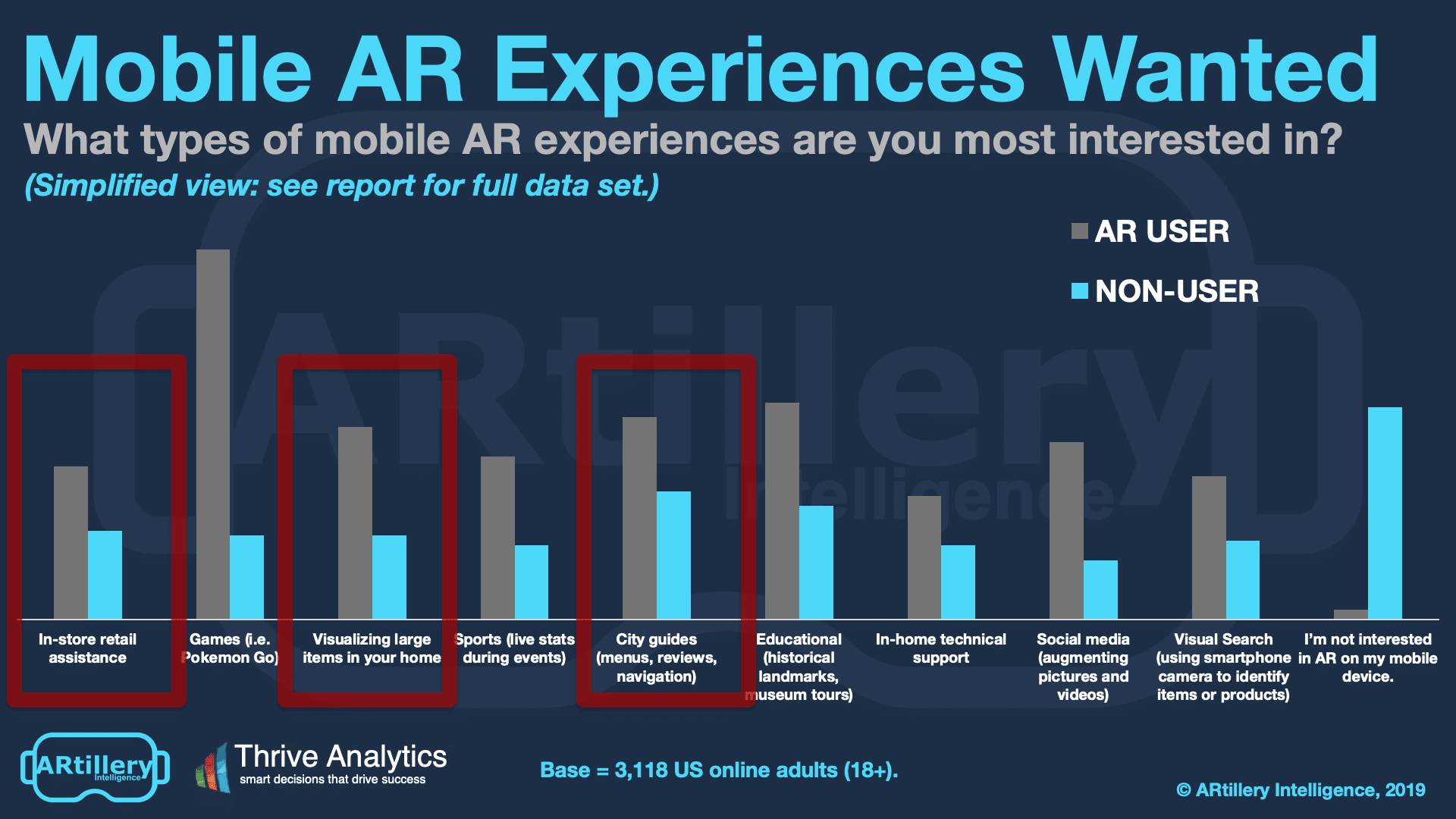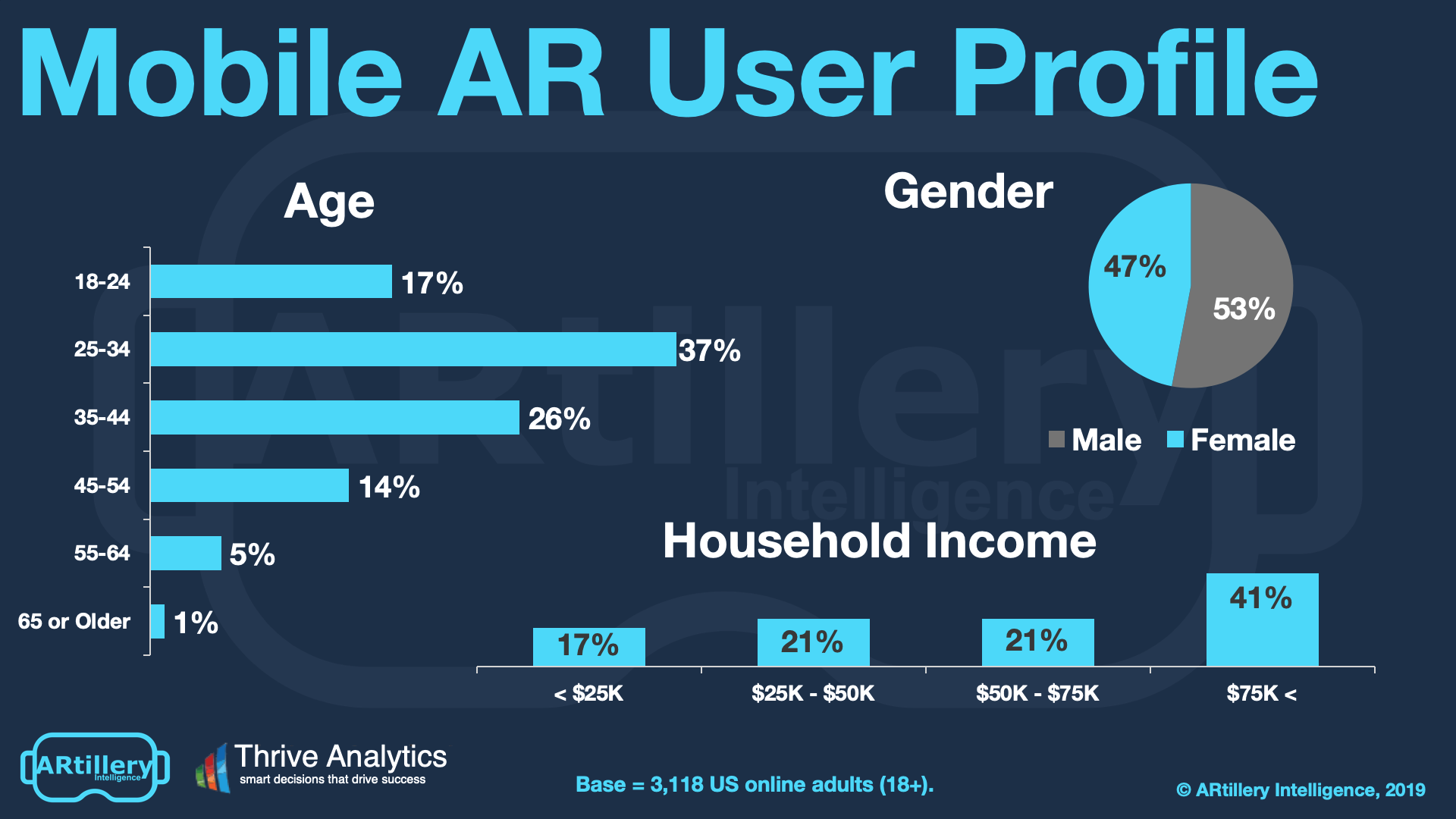
This post is adapted from ARtillery Intelligence’s latest report, Mobile AR Usage & Consumer Attitudes. It includes some of its data and takeaways. More can be previewed here and subscribe for the full report.
How do consumers feel about mobile AR? Who’s using it? How often? And what do they want to see next? More importantly, what are non-users’ reasons for disinterest? And how can app developers and anyone else building mobile AR apps optimize product strategies accordingly?
These are questions we set out to answer. Working with Thrive Analytics, ARtillery Intelligence wrote questions to be presented to more than 3000 U.S. adults. The results are in and analyzed in the latest ARtillery Intelligence report. Today we dive into what consumers want to see next.

What’s Next?
Perhaps more important than consumers’ current usage is their sentiment about what they’d like to see next. Gaming was the clear winner (75 percent) among AR users, followed by education (40 percent) and product visualization (38 percent). But we also see new categories emerge.
These include city guides (39 percent), sports (35 percent) and retail (33 percent). City guides and retail align well with AR, given the potential to overlay product info like reviews and promotions. These could be advantageous because they map to high-frequency activities.
Meanwhile, AR in sports could evolve into compelling arena experiences, such as player stats and additional layers of entertainment. Meanwhile, broadcasters hungry for innovation can battle cord-cutting with compelling “second-screen” mobile AR features in the home.
In all categories, the same trend continues to emerge: users are more interested in AR than non-users. This validates that current AR users are “sold” on the experience and highly engaged. Non-users conversely show explicit disinterest. This is partly because they haven’t tried it.

Confidence Signal: Where’s the Money?
Expanding on the above aspirational sentiments, another important trend jumps out at us. When zeroing in on a few of the top desired AR experiences among users, a theme emerges. Several of the top demanded AR experiences also happen to be the most monetizable forms of AR.
Including product visualization, city guides and in-store AR, these represent many potential AR business models we’ve examined. ARtillery Intelligence’s recent AR commerce report for example projects $6.1 billion in U.S. commerce to be influenced through AR shopping features by 2022.
But beyond the admittedly early-stage and speculative analysis of consumer AR’s potential, these survey data provide additional validation. In other words, user demand signals are aligned with the areas of AR that are potentially the most monetizable, due to their natural ties to commerce.
We’ll continue to see user behavior develop, as well as products and business models. In the meantime, these are positive signals for AR’s business case. It shows signs of being a valuable user shopping tool and correspondingly an informational/promotional tool for brands & retailers.

Cross Section
To add context to survey findings throughout this report, who’s answering the questions? It includes more than 3000 U.S. adults. Going deeper into demographics and psychographics, AR users break down as shown above.
As the data show, the segment of AR users spans a wide range of U.S. adult consumers. Gender breaks down fairly evenly, while age and income levels skew towards attractive demographic groups. That includes buying-empowered age groups (25-34), and high-income homes ($75K+).
See more details about this report or continue reading here.
For deeper XR data and intelligence, join ARtillery PRO and subscribe to the free AR Insider Weekly newsletter.
Disclosure: AR Insider has no financial stake in the companies mentioned in this post, nor received payment for its production. Disclosure and ethics policy can be seen here.
